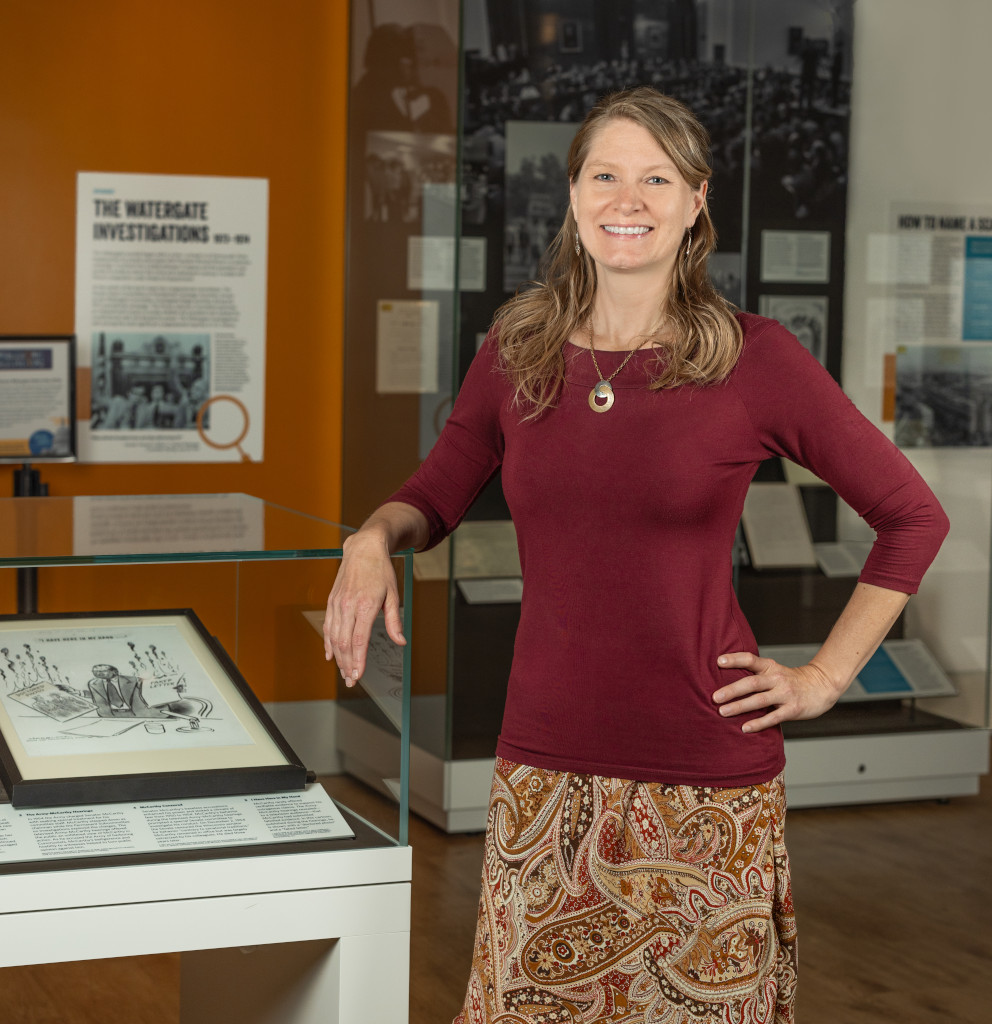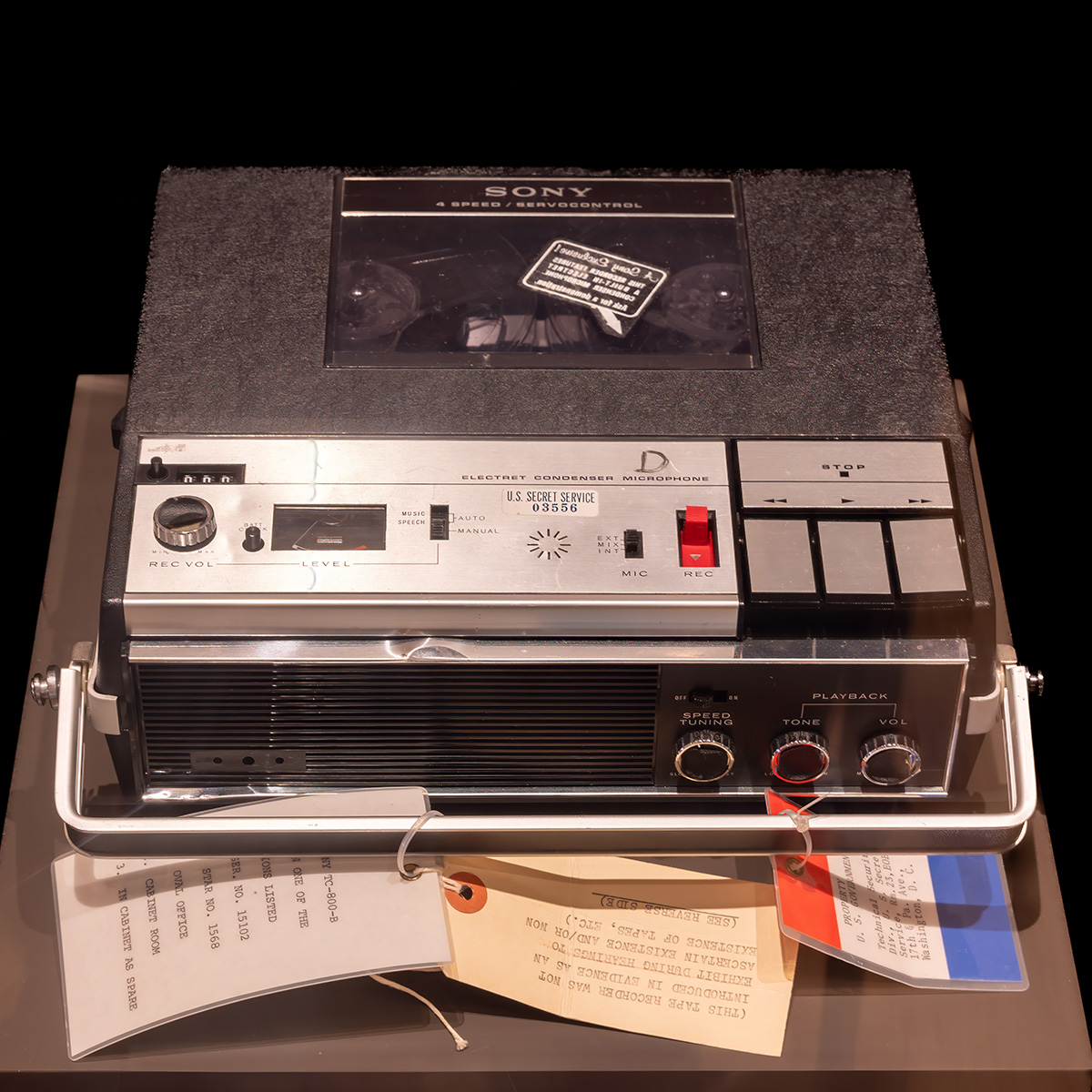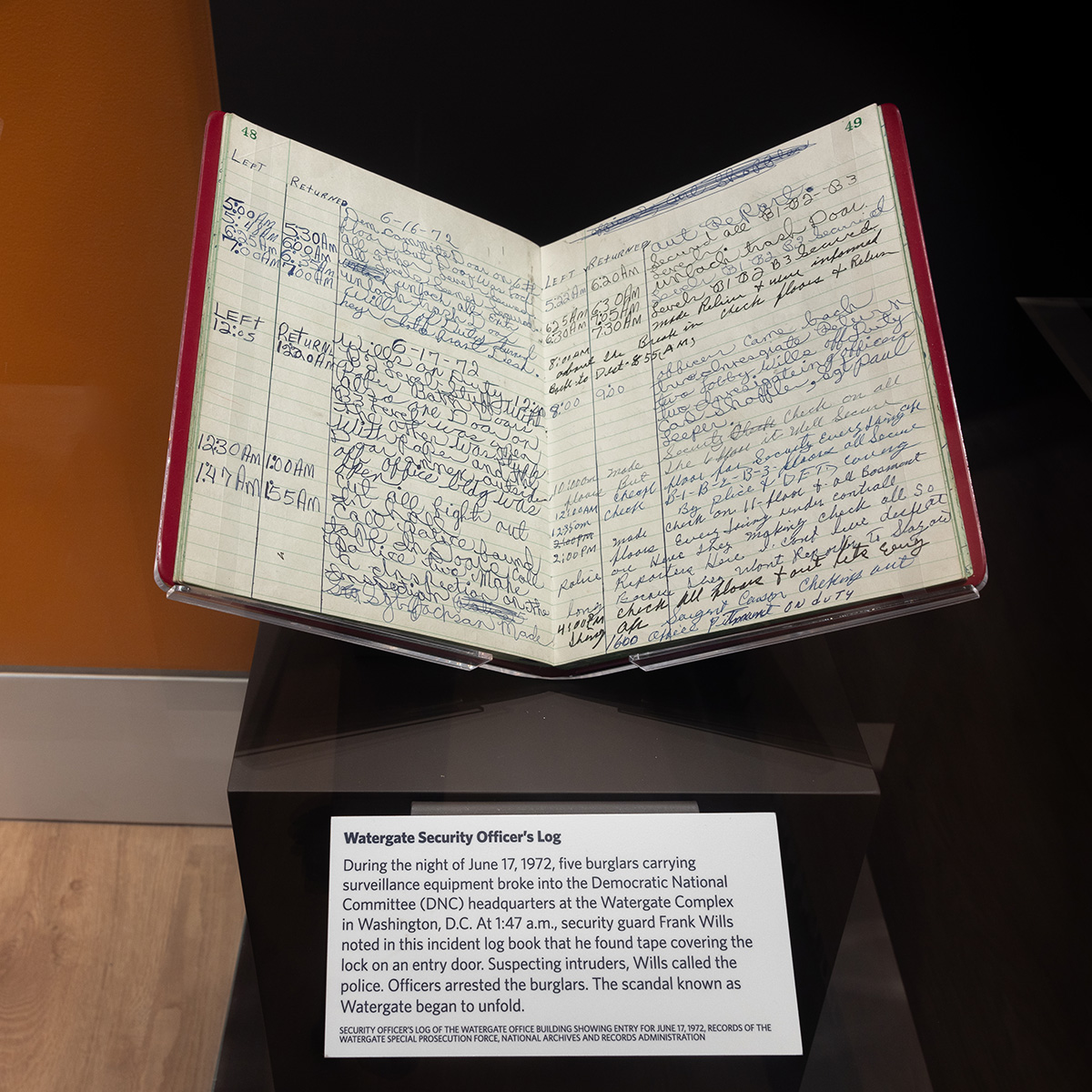Watergate 50th Ann. Special Exhibit
Interview With Christine Blackerby, Exhibits Curator
by Jen Packard, CVC Multimedia Specialist

This August marks the 50th anniversary of the conclusion of the Watergate scandal. The scandal began in 1972 when five burglars, associated with President Richard Nixon’s re-election campaign, broke into the Democratic National Committee headquarters in the Watergate complex in Washington, D.C. This prompted a congressional investigation that revealed multiple abuses of power by the Nixon Administration. We spoke with Christine Blackerby, Exhibits Curator for the U.S. Capitol Visitor Center, about the significance of this investigation and its inclusion in the “Congressional Investigations” special exhibit.
Jen Packard: Please tell us about yourself and your role at the Capitol Visitor Center.
Christine Blackerby: I am the Exhibits Curator at the Capitol Visitor Center. With my talented colleagues, I create museum exhibits in our Exhibition Hall that highlight the history of Congress and representative government.
JP: How is the Capitol Visitor Center’s Exhibition Hall unique in relation to other historical museums?
CB: Our museum is located in a working office building—the U.S Capitol—and our subject matter—Congress—creates new history every day. Part of my job is to ensure that the information in our exhibits remains accurate and up to date as Congress passes new laws and establishes new procedures and precedents.
JP: When you are designing an exhibit how do you decide to tell the story?

CB: For me, the most fun part of creating an exhibit is figuring out how to share the stories. There are so many ways to experience new information—stories can be told through artifacts, images, video, maps, infographics, interactives, and more.
I think about each idea I want to convey, and how to present it so visitors can best understand it. Artifacts and documents are my personal favorites—they are the evidence of what happened, and their authenticity has profound power. If an exhibit inspires curiosity and visitors continue to explore it, I have done good work.
JP: What do you hope to accomplish in the special exhibits displayed in Exhibition Hall?
CB: Our Special Exhibits are a unique opportunity to take a closer look at how Congress works. My hope is that visitors who experience our exhibits will walk away with a deeper understanding of how Congress has worked in the past so that they can use that historical context to better understand what Congress does today.
With our current “Congressional Investigations” exhibit, this is particularly relevant. “Congressional Investigations” highlights 13 of Congress’ previous inquiries by placing them in historical context and displaying artifacts and images that help explain the often-complicated proceedings. Looking at the whole picture of these events can provide perspective and insight on similar Congressional investigations occurring today.
JP: How did you choose the specific artifacts and government documents for the “Congressional Investigations” special exhibit?
CB: I started with two goals—I wanted our visitors to understand why Congress investigates and what happens when they do it. To illustrate these ideas, I looked for items in other museums, archives and collections that we could borrow to display.
For the section of the exhibit on the Watergate investigation, a key part of the story is the moment in the hearings when the Senate Watergate Committee learned that President Richard Nixon had a secret tape-recording system in the White House. Access to Nixon’s recorded conversations became the focus of the affair. I knew immediately that I wanted one of Nixon’s tape recorders in the exhibit, and I am grateful that we were able to borrow one from the Richard Nixon Presidential Library and Museum.
JP: What specific role did Congress play in the Watergate investigation?

CB: Both chambers of Congress played distinct roles. When the Senate established its investigation into the Watergate break-in and cover-up, it was exercising Congress’ oversight function—its power to oversee how faithfully the executive branch is implementing the laws that Congress makes. During the Senate Watergate hearings, the committee discovered evidence that a number of laws had been broken by members of the Nixon Administration and re-election campaign. The committee’s final report made a number of recommendations for new laws to address the problems they uncovered.
The purpose of the investigation in the House of Representatives was to determine whether or not grounds existed for the House to use its impeachment power with relation to President Nixon. The House Judiciary Committee adopted three articles of impeachment, but Nixon resigned the presidency before the full House voted on them.
Although both chambers were investigating the same subject, they did so with different purposes and different outcomes.
JP: What is your favorite element of the Watergate content and why?
CB: My favorite Watergate story relates to the speech given by Representative Barbara Jordan of Texas to the House Judiciary Committee. The committee had investigated whether President Nixon should be impeached for his role in the Watergate burglary and cover-up and were preparing to vote on adoption of three articles of impeachment.
Jordan captivated the nation in her televised speech. “My faith in the Constitution is whole, it is complete, it is total,” she said. Concluding that President Nixon had violated laws that he had sworn to faithfully execute, she declared, “I am not going to sit here and be an idle spectator to the diminution, the subversion, the destruction of the Constitution.”
Our exhibit includes a page of Jordan’s speech and a photo of her delivering it.
JP: Can you give us a sneak peek about what’s coming next?
CB: Our next special exhibit, “The Nation’s Stage,” is about the ceremonies and traditions of the Capitol and Congress. This includes events such as inauguration, visits by foreign leaders, the Electoral College count, and the opening of a new Congress. “The Nation’s Stage” will open at the Capitol Visitor Center in September 2024.
The Capitol Visitor Center’s “Congressional Investigations” exhibit is open through August 10, Monday – Saturday, from 8:30 a.m. to 4:30 p.m.